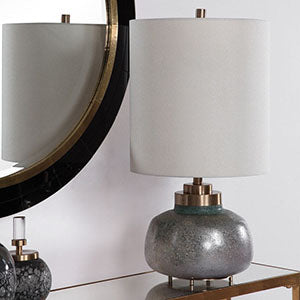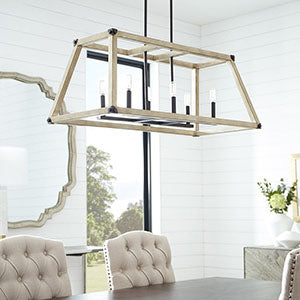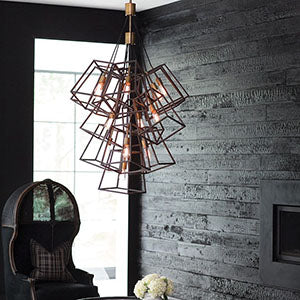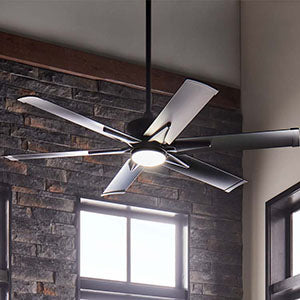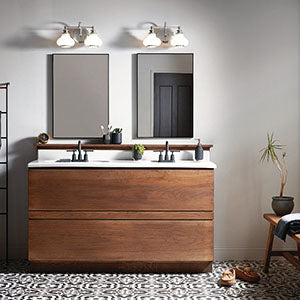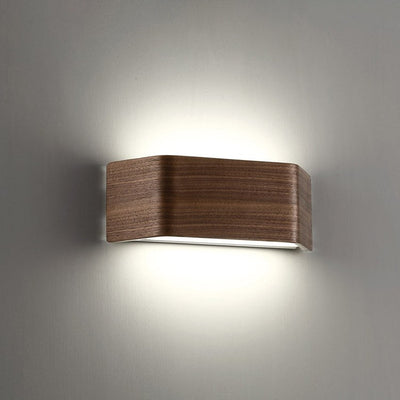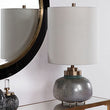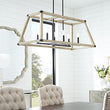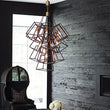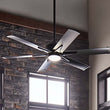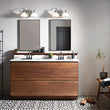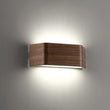Lighting
Cook Up Creative Kitchen Lighting Style: Tips to Add Flavor and Brightness

The kitchen is truly the heart of any home. It's where you prepare delicious meals, gather with family, entertain friends, and enjoy that first sip of coffee or tea in the morning. Lighting is the key to enhancing the warmth and welcome of this room—and helping you see what's cooking. Read on to learn how to add bright and creative lighting to your kitchen.
What Is the Best Lighting for Kitchens?
When choosing kitchen lighting, a mix of ambient, task, accent, and decorative lighting is the key to a balanced and versatile brightness. A blend of light styles is also the key to layered lighting, which creates depth in your kitchen and allows you to light in zones. No need to light the entire kitchen if you're enjoying a cup of tea and a good book at your kitchen island. You can create the light and layering you need with a variety of light fixture types, including:
Recessed Lighting
This is a flexible lighting option in the kitchen. You can use ceiling-mounted recessed fixtures for task lighting above a sink, dramatic accent lighting over a beloved piece of wall art, or ambient (general) lighting throughout the kitchen. When using throughout the room, space recessed lights at least two feet apart.

Pendants and Chandeliers
Pendants and chandeliers serve as dynamic visual focal points and set the design tone for an entire room. Linear suspension lighting designs are preferable over kitchen islands and prominent counters without overhead cabinets.
Ceiling Fans
Kitchen ceiling fans help circulate air to keep you cool while cooking and provide the ambient light you need for reading a recipe, chopping, mixing, and serving. Stylistically, the right ceiling fan can bring a contemporary, modern feel to an otherwise ho-hum kitchen design.
Wall Sconces
Sconces are small light fixtures that deliver big style and versatile placement options. Choose sconces that match your kitchen style and install a row of four or six above a long counter, or put a sconce on either side of the window near the kitchen sink.
Flush and Semi-Flush Mount Ceiling Lights
Ideal for smaller kitchens in need of one central light source, flush and semi-flush mount ceiling lights offer than recessed lights. Add artisan color to your kitchen with a semi-flush light showcasing a Tiffany-style glass shade. Or, favor simple sophistication with a Craftsman-inspired fixture.
Undercabinet Lighting
Standard undercabinet fixtures and tape lights provide the brightness required for meal preparation and other tasks, while also adding ambiance as elegant accent lights.
Kitchen Island Lighting Ideas
Entertaining, food prep, cooking, dining, homework, and reading. All of these and more take place at your kitchen island. The lighting above this area makes this an inviting gathering spot—you want to choose fixtures that enhance your kitchen's style and deliver abundant warm light. Get inspired with these kitchen island lighting styles:
Add a pop of color with a row of pendants. These fixtures often showcase shades in clear, frosted, or shades of painted metal. Choose four or five pendants in a vivid color that coordinates with your kitchen and line them up over the island for a striking design element. Make sure there are at least 30-36 inches between the bottom of the pendant and the kitchen island countertop.
Choose linear pendants to make a statement with ease. Linear pendants showcase a row of hanging lights on one fixture. Choose a linear pendant in an industrial-chic style for a modern look that installs with ease.
Create a charming space with a chandelier. The right chandelier turns your island into the crown jewel of your kitchen design. Choose an extravagant design featuring crystal florets or a dramatic collection of cut glass, or opt for elegant simplicity with a four-bulb design with frosted glass and a matte black finish.
Go understated with recessed lights. If you don't want pendants or chandeliers to interfere with sightlines, recessed lights above your island give you abundant light for tasks. When used with dimmers, they can be lowered enough for mood lighting. When combined with pendants or a chandelier, recessed lights serve to highlight design elements of those bolder fixtures.
Add a functional element with a ceiling fan light. People gravitate to the kitchen, but sometimes it can get too hot. A ceiling fan light in the center of the room above your kitchen island keeps the air moving and your guests comfortable.
Keep it simple with tasteful track lighting. Stunning modern designs make track lighting into sculpture-like pieces of art. Curved mountings help to bring a sense of movement and accentuate the flow of your kitchen.
Add dimension with undercabinet lights. Placing strip lights under the overhand or lip of the kitchen island helps emphasize its contour and shape, and adds a taste of contemporary panache.

Small Kitchens Lighting Ideas
From small-footprint condos and townhomes to older homes with functional kitchens hidden from view, not every kitchen is spacious. Smaller spaces demand special lighting considerations:
Galley kitchen lighting: Task lighting is king here, with a single light pendant hanging over a kitchen sink or flush-mount light doing the trick. Undercabinet lighting helps brighten high-use countertops.
L-shaped kitchen lighting: Pendant lights can help accentuate the angles and room design, especially when using multi-light linear fixtures. Sconces add light to dark sections of the room, while recessed fixtures add a layer of ambient light throughout.
Small eat-in kitchen lighting: Use a small chandelier or pendant to define the dining area. Then use recessed lights and wall sconces to brighten busy kitchen zones, such as the stove, sink, and counters used for food prep.
Strategies for a Beautifully Bright Kitchen
The number, style, and placement of your fixtures influence the brightness they provide, as do the bulbs you choose. Here's how to make sure you have the light you need for cooking, cleaning, and relaxing in the hub of your household:
Pay attention to bulb intensity. Keeping in mind that a typical 60-watt incandescent bulb produces about 800 lumens, aim for your bulbs 5,000 to 10,000 total lumens throughout your kitchen. You're going to need more intense bulbs for tasks like food prep and dishwashing, while recessed lights don't need to burn quite as bright.
Brighten with reflective and light finishes. For kitchens without a lot of natural light, reflective fixtures help bounce what light there is throughout the room. Whites, silvers, and other lighter colors offset dark cabinetry, while bronze and copper fixtures create a warm glow against white cabinets or wood cabinets with a light finish.
Use the right number of lights. Remember to light your kitchen in layers, meaning you should have multiple fixtures to produce ambient, task, and accent light. Recessed lights are most commonly used in groups, about one for every five feet of ceiling space. Sconces, pendants, chandeliers, and undercabinet lighting will help balance the overall space.
The days of one overhead fluorescent light in your kitchen are over. Use the tips above to bring style and function together in the most important room of your house.

